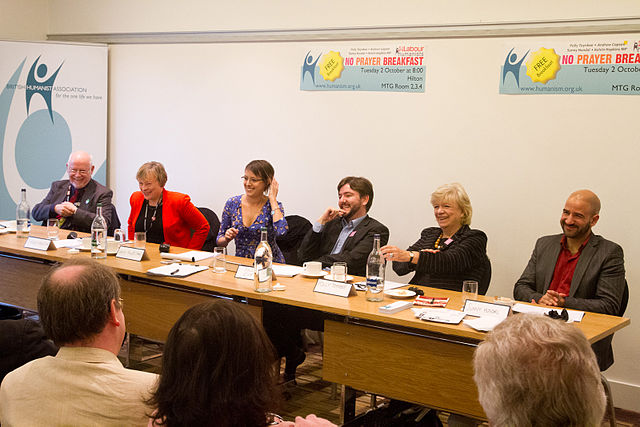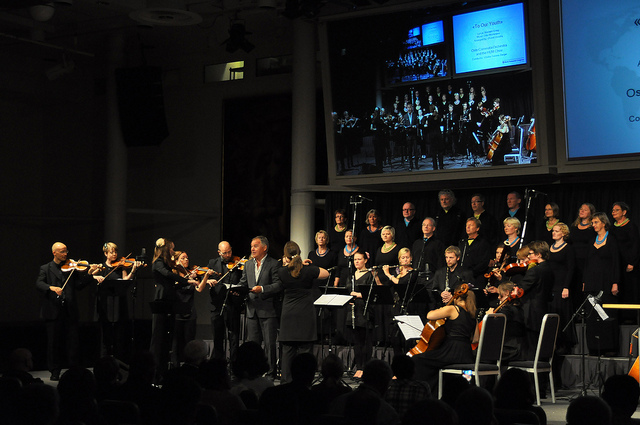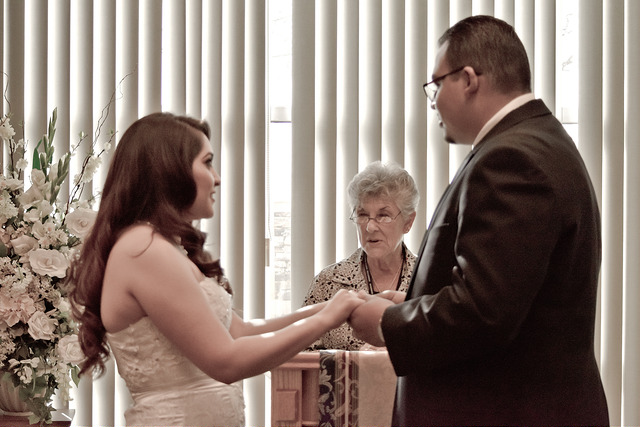Global Plus: The nonreligious in the world today

nones: Growing nonreligious population reshaping civil societies and geopolitics.
There is no ignoring the nonreligious any more.
After scant interest for most of the 20th century, the nonreligious – or the nones
as they are often referred to – are attracting increasing public attention as their numbers grow in many Western societies.
Depending on how they are counted, the nonreligious today may be considered the world’s third largest religion,
trailing only Christianity and Islam.
With this heightened awareness come some pressing questions.
From differing perspectives, people wonder:
- Are nonreligious people significantly different from religious people, and is this something societies should be worried about?
- Should schoolteachers, immigration officers, lawyers and others who sometimes give consideration to people’s religiosity engage with nonreligiosity, too, and how should they go about this?
- What is the impact of this increasingly large and influential constituency on the political landscape, and how will they shape the politics of tomorrow?
The import of these and other concerns is evident around the globe, where the makeup and balance of religious and nonreligious populations, along with their shared history, matters in ways both small and large.
These range from the transformation of rites accompanying events such as the birth of a child to the challenges posed by the rapid integration of religious immigrants from ethnic minorities in increasingly nonreligious European nations.
The fate of governments themselves can stand in the balance of relations between the religious and nonreligious.
Recent times have seen, for example, the election of Donald Trump, a populist candidate with no political experience, to the U.S. presidency with support from an estimated 81 percent of white Christian voters who identified as born again
or evangelical. This is a constituency that perceived itself as being marginalized and ignored in an increasingly secular, even anti-religious public square.
Nor is it all about tensions.
Religious and nonreligious groups also exert political influence by working together in significant projects such as the development of welfare states.
For all of these reasons and more, questions about the nonreligious have become significant to anyone seeking to understand global societies.
Yet before we can begin answering them, it is important to recognize that the nonreligious population in all its variety and complexity.
I don’t like fennel, (but) I don’t hang out with other
British comedian (and non-theist) Marcus Brigstocke.anti-fennelistsat the weekends.
Just who are the nonreligious?
Think of the nonreligious, and many people’s minds leap straight to atheism, and maybe to prominent figures such as the biologist Richard Dawkins, author of The God Delusion.
Figures like Dawkins have become important spokespersons for contemporary nonreligion as they move beyond their scholarly writings to undertake public actions such as disseminating non-theist messages on London city buses. Or garnering media attention through provocative critiques of religion – as in Dawkins’ view that Islam is one of the great evils of the world,
or that Faith seems to me to qualify as a kind of mental illness.
But this focus on Dawkins and a limited set of non-theist and nonreligious figureheads and organizations – humanist associations, the Sunday Assembly (or Atheist Church,
as it was dubbed in the media), etc. – is out of step with global realities.
They are important, yes, but they represent an infinitesimal part of global nonreligion.
One way to think about who the nonreligious are is to look at those who do not affiliate with a religion – the unaffiliated. And, far from being represented by Dawkins, the overwhelming majority live in Asia Pacific – almost two thirds in China alone, by some estimates.
What is more, despite their common lack of affiliation with a religion, this group is quite varied. It doesn’t only include people who think that God/gods do not exist, but also sizable numbers of agnostics, as well as people who simply do not engage with such questions at all.
This group also includes those who believe in God or other divinities but who do not identify with a religious tradition – those who we might, in Christian contexts, call the unchurched
– as well as those who explore the existential aspects of life through alternative spiritual practices.
When we take a closer look, this variety multiplies.
In my field research in England, I did talk with some anti-religious people who would classify religious people as stupid
, insane
or having some other kind of brain malfunction.
Yet I also met people who took different stances towards other people’s religiosity – including many people who said, I’m an atheist, but not one like Richard Dawkins.
The nonreligious included people like:
- Cat, a charity worker in her 20s, who described herself as a humanist and an atheist. She was someone who
wouldn’t not go
to religious ceremonies with friends and family, and might even sing along. She just would not recite the prayers. - James, a 24-year-old journalist, who said he would describe himself on a survey as having no religion. In practice, he was not very concerned about religion at all. James didn’t not know the religious orientations of his friends – it was not, he said, something they talked about. And he was becoming increasingly critical of the more anti-religious views that he had once held.
- Jude, a woman in her 30s, who said she was nonreligious, but searching for meaning outside of what she felt science and religion could offer her. Jude was as critical of science as she was of religion: She felt both were too much about explanation and certainty. For Jude, meaning comes much more from the mystery and magic of the unknown.
- Hermione, 36, who said she was happy to call herself an atheist. But she worries that in some circumstances it may have bullying overtones.
Calling yourself an
atheist
in company, can occasionally seem like holding up a big sign saying,If any of you are anything other than atheists, I think you’re all ****ing morons.
Which is disrespectful in the extreme, obviously. - Jane, a 33-year-old government worker, who reported multiple identities. She would variously classify herself as an atheist, in part to irritate her mother; a practicing Methodist; a member of the Church of England, if it helped increase public funding for a denomination she is fond of; a
natural pantheist,
when it would allow deeper conversations with family and friends; and as actively religious, when it would pre-empt missionary efforts.
Even familiar categories such as atheist
, secular
, spiritual but not religious
, and agnostic
are not straightforward ways to get a handle on the way in which the nonreligious exist and the kind of constituencies they represent.
And a handle we need to get, since the nonreligious are a force that many societies need to reckon with.

Understanding unbelief
A major reason why nonreligiosity is not well understood and can often be a hidden feature of our societies is because we lack knowledge about what it is that atheists, non-theists, agnostics and other groups of so-called unbelievers
actually believe.
This is a difficult question to answer, not least because people have not been all that interested in it before now.
Large religious majorities for much of human history mean that, when it comes to the nonreligious, the questions that we ask tend to be religion-centered – focused on how and why religious beliefs have weakened rather than the new beliefs people have taken up.
So we know something of what so-called unbelievers don’t believe in, but it is only now that nonreligious populations have become such sizable presences in Western society that we are beginning to seriously ask what it is that they do believe in.
Is the belief that God does not exist entirely free-floating or – as is much more likely – is it informed by other beliefs, such as the primacy of human knowledge and science, or a need for humility about what humans can know about the metaphysical?
And how do these beliefs take shape across demographic groups and across cultures?
We know that the number of nonreligious vary country-to-country and group-to-group, but what happens if we think about the nonreligious in terms of denominations
of believers – if we distinguish between, say, nonreligious humanists, non-theists, agnostics and the alternatively spiritual?
It might then be possible to identify concentrations of different types of nonreligious worldviews
in different regions. Perhaps there are more humanists within the French population of so-called unbelievers compared to more agnostics in the United Kingdom. Perhaps humanism in the UK is something quite different from humanism in Sweden.
Knowing whether such distinctions exist and what they are isn’t a matter of knowledge for knowledge’s sake. It is a crucial vantage point on the regional and geopolitical tensions around religion, political secularism and democracy that we are experiencing today.

Hidden in plain sight
What we do at least know is that many nonreligious people engage with the existential – that they are what some call spiritual,
(though the nonreligious themselves do not always use that term).
In the late 20th century, sociologists were predicting the decline of existential thought and ritual altogether.
But, while some countries have seen declines in existential rites (especially in naming ceremonies and other rituals around birth and childhood), the big story is not the decline of existential ritual but the transformation of those rituals.
For example, across the West, there have been marked decreases in the number of people getting married over past decades, but equally striking is the huge shift from those choosing civil and nonreligious ceremonies instead of religious ones to marry.
In fact, today sociologists argue that we have actually seen an invigoration – the proliferation, commercialization, etc. – of new forms of meaning-providing rituals, be it birthday parties or baby showers.
Another big change that comes with the growth of nonreligion is the decline of institutions as a forum for engaging with existential ideas or rituals.
The vast majority of nonreligious people do not turn to churches and other organizations to engage with and explore issues of meaning. But they do have opportunities to connect with existential meaning and cultures – through novels, movies, song lyrics and poetry, or through engaging with media discussions that challenge their existential beliefs, be it debates around the ethics of birth control, abortion, euthanasia and cryogenics, or around more mundane events, like Google announcing a research program into immortality.
As the British sociologist Abby Day has shown, we even see new forms of nonreligious ancestor worship
appearing throughout our societies, as expressed in British artist Robert Montgomery’s public work, The People You Love Become Ghosts Inside Of You And Like This You Keep Them Alive
.
In fact, the existential life of nonreligious people is far from invisible: It is all around us, even in so-called secular societies. We just haven’t always been ready to see it.
Understanding one another
Even when we do notice the nonreligious identities and existential cultures surrounding us, we often lack the language to talk about it. This isn’t helped by the fact that many nonreligious people choose to keep their beliefs hidden from view.
But there are good, sometimes pressing, reasons that we should be talking about nonreligion – and trying to find a much better language for having these conversations.
The issue is not only that the nonreligious are one of the world’s largest religions,
and that they are involved in the same global conflicts that Christians, Muslims and smaller religious constituencies are.
There is also need for closer scrutiny of the rights and restrictions allocated to those who do not affiliate with a traditional religion.
The nonreligious are not often beneficiaries of the same protections and subsidies that religious groups are – and neither are they subject to the same restrictions and attacks. Likewise, the nonreligious are sometimes discriminated against on the basis of their nonreligion, but they sometimes discriminate against others, too.
There is today also a need to think about the way in which nonreligious – as well as religious – belief systems exert influence over public affairs.
For example, should the ability to endorse candidates from the pulpit be limited in Sunday Assembly and humanist association gatherings the same way it is for Catholic or Anglican churches in some nations?
What about issues of acute over-representation of those affiliated with religious organizations in political and public arenas compared to those who are nonreligious or wish to explore their relationships with God and other forms of spirituality outside of recognized institutions?
These inequities arise from religion-centered (and religion-centric) ways of viewing societies, but they cut both ways – and they are necessarily volatile.
Opening the public square to the religious and nonreligious on consistent terms may both vitalize the marketplace of ideas,
and limit tensions that arise from exclusion (perceived and real) that fuel tribal tensions and extremism among secularist, nonreligious, and religious groups.
No one can predict the future with certainty.
Globally, the growth of nonreligious populations is outweighed by the growth of religious ones, so that, even though more people convert to nonreligion than they do to any other religious identity, the nonreligious actually represent a declining share of the world’s population. Whether conversion to nonreligion will offset religion-favoring birthrates in the future remains to be seen. The emergence of cultural forces like Communism that encourage nonreligion also is difficult to predict.
One thing is certain, though: The nonreligious is a large and growing population, of sufficient size that it will play a central role in societies and geopolitics for a long time to come.
This means we need to increase our understanding of the nonreligious, gaining an appreciation of the richness and diversity of the beliefs and practices of an influential group that can no longer be hidden in plain sight.
Lois Lee, author of Recognizing the Non-religious: Reimagining the Secular, is a research fellow at the University of Kent, director of the JTF-funded Understanding Unbelief programme, co-director of the Nonreligion and Secularity Research Network and co-editor of the journal Secularism and Nonreligion.
Image shared by Andrew West, of the British Humanist Association, Wikimedia Commons (CC BY-SA 3.0)
Image shared by Arnfinn Pettersen, flickr (CC BY-SA 2.0)
Image shared by mosespreciado, flickr (CC BY-ND 2.0)
Resources
- Association of Religion Data Archives: Search nearly 1,000 surveys and find citations for several hundred journal articles for comprehensive information on topics such as the nonreligious and related subjects such as secularism, atheist and agnostic.
- ARDA National Profiles: View belief, demographic, socio-economic and public opinion data for all nations with populations of more than 2 million.
- The Nonreligion and Secularity Research Network (NSRN): Access an overview of research activities and publications on atheism, nonreligion and secularity. The NSRN is the largest research network in this field.
- Pew Research Center: Religion & Public Life: Pew offers survey findings on the nonreligious in the U.S. and around the world.
- Secularism and Nonreligion: Explore the latest research at the world’s first academic journal dedicated to the investigation of secularism and nonreligion in all its forms. All articles are available online and free to access.
- Other websites offering information about the nonreligious include those associated with the Understanding Unbelief, Diversity of Nonreligion and the Multiple Secularities research programs, and The Immanent Frame, which offers interdisciplinary perspectives on religion, secularism, and the public sphere.
Articles
- Mallimaci, Fortunato. GlobalPlus: Religion and Politics in Latin America. A leading authority on beliefs systems in Latin America says the region is not experiencing an inexorable march toward secularism, or a descent into holy wars. Rather, he reports, the paradigm of Latin American religious modernity is an evolving dance among political, social and religious forces in a region experiencing the longest democratic process in its history.
- Yang, Fenggang. GlobalPlus: Religion in China. An overview of secular-religious tensions in modern-day China.
Books
- Eds: Bullivant, Stephen and Ruse, Michael. The Oxford Handbook of Atheism. This compendium of 46 essays considers atheism from diverse perspectives across the sciences and the arts, and includes case studies from around the world.
- Gutkowski, Stacey. Secular War: Myths of Religion, Politics and Violence. This book investigates how nonreligious and secularist beliefs shape international relations and global conflict.
- Lee, Lois. Recognizing the Non-religious: Reimagining the Secular. Drawing on extensive field research, the book sets out the diverse ways in which the nonreligious are making their presence felt in modern societies.
- Lee, Lois, and Bullivant, Stephen. A Dictionary of Atheism. The dictionary explains core concepts for understanding nonreligion and secularity.
- Zuckerman, Phil, Luke W. Galen, Luke W., and Pasquale, Frank L. The Nonreligious: Understanding Secular People and Societies. An overview of nonreligion as a personal and social phenomenon.
